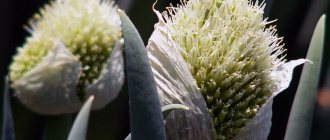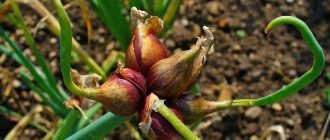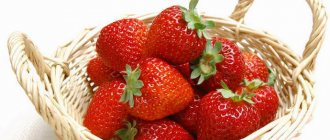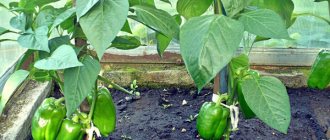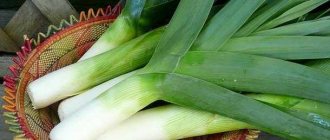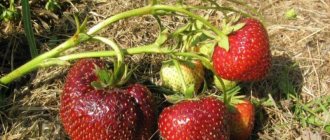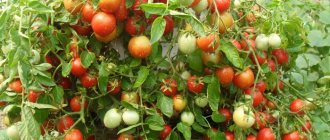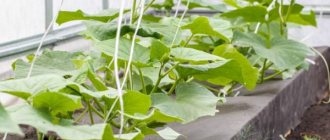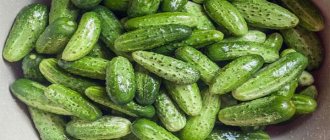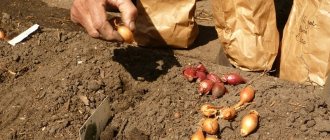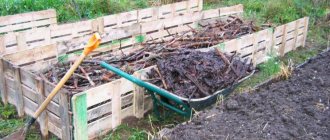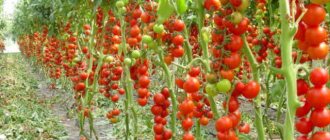Onion is popular all over the world; it is loved for its unpretentiousness, ease of care and original taste. Unlike common onions, spring onions are not so spicy and do not give an unpleasant aftertaste. Therefore, the vegetable is very common in gardens, and even a beginner can cope with its cultivation.
Onion
Onions are grown for their greenery
Onion has a delicate taste without a pungent odor
Plant characteristics
Onion is a perennial plant. It grows wild in Southeast Asia, Siberia, and Japan. It is also called “angelica”, “Tatarka” or Chinese onion. A distinctive feature of this plant is the absence of a large bulb. Onion fruits are oblong, not sharp, slightly thickened at the end.
Onions are grown for their greenery. The feathers of this onion, unlike onions, are thicker and hollow inside. They can reach a diameter of 2.5 cm. If they are not cut, they grow up to 1 m. The variety is popular due to its delicate mild taste and lack of a strong odor, which is why it is called odorless garlic.
Onions are just as healthy as onions. It contains many vitamins, minerals, amino acids, and saturated fatty acids. Just 150 g of greens contain the daily requirement of vitamins C and A. Spring onions have a higher nutritional value than regular onions.
In addition to its valuable nutritional qualities, this plant attracts gardeners with its ease of cultivation. Its distinctive features are the following properties:
- grows in one place for 8-10 years, although already 4 years after planting it becomes smaller and thickens;
- if feathers are not collected in time, they become stiff;
- already in the second year, each bush throws out 1-2 peduncles, on which small seeds appear;
- grows well in any soil, but does not tolerate either a lack of water or its excess;
- It is best to grow onions in partial shade, because... in the bright sun the leaves will dry out and arrows will form faster;
- tolerates light frosts well.
Crop rotation rules
Onions are planted after white and cauliflower, broccoli, tomatoes, peas , beans, zucchini, eggplant, flax, lupine, and oats.
Bad predecessors are garlic, carrots and onions. Batun is a perennial crop and is capable of producing greens for 7-10 years . However, the quality of the crop decreases. Peak fertility occurs 3-4 years after the first sowing. After another year, a decrease in yield is observed. Therefore, 4-5 years after planting the batun, a new bed is created and the seeds are sown again.
Thus, it is possible to replace low-yielding plantings with new ones. Seeds are collected from the old bed, dried, processed and sown. Such crop rotation does not require cash investments.
Onion varieties
The culture is widespread everywhere; a lot of this onion grows wild. For growing in the garden, varieties with the most valuable nutritional properties are used. Also popular are those that ripen quickly and produce a lot of greenery.
Several of the best varieties of onion can be noted:
- Russian size . It is distinguished by tall and thick stems, which are not only added to salads, but also stuffed.
- Emerald . It is a hybrid of batun and onion, so its leaves are sharper than others. They are dark green, juicy, and good to use in salads. The variety is resistant to frost and pests.
- Russian winter . It is grown as a perennial; it is especially valuable in the second year - it produces a lot of succulent leaves. Unlike other varieties, it has a longer bulb. Stores well after cutting.
- April . He ripens before everyone else, appears as soon as the snow melts. Withstands frosts down to -10 degrees, is resistant to pests, but does not tolerate weeds. Produces sweetish fleshy leaves rich in vitamins and minerals. Its peculiarity is that it can produce 3-4 harvests per season.
- Tenderness . Valued for good yield and pleasant taste. It can be collected in the spring. The leaves are light, with a delicate sweetish taste, the bush does not branch much, and does not grow higher than 50 cm.
- Baron . Early ripening, tolerates frost well, unpretentious. It produces a large harvest only in the second year. The leaves are straight, bright, and have a sharp taste. They can be prepared for the winter by freezing.
The choice of onion variety to grow depends on many factors. It is necessary to take into account the climatic conditions of the area and soil characteristics. The choice also depends on how quickly you need to get the harvest and what it will be used for - for salads or long-term storage. You also need to take into account taste preferences, since all varieties have different tastes: some are spicier, others are sweeter.
Suitable varieties
Late-ripening varieties are best suited for planting batun before winter . They produce greens in 150-180 days and are highly productive. From 1 sq. m manages to collect 2-3 kg of green feathers.
The best late-ripening varieties:
- Maysky . Winter-hardy (withstands up to -45°C), highly branched. The leaves are dark green with a rich waxy coating. In spring, the feather grows late. From the moment of germination to full ripeness, 45-50 days pass. The plant throws out arrows up to half a meter high. In the second year it forms up to five stems. The taste is spicy, spicy, sweet.
- Gribovsky . High-yielding, perennial, branched plant. Green feathers sprout slowly. The onion head is almost invisible from the ground. From the moment of sowing until the first greenery appears, 60-65 days pass. The leaves are erect, 40 cm long, falling without support. The taste is slightly spicy with a slight bitterness and a persistent onion smell.
- Seryozha . The growing season is 80-110 days. The taste is semi-sharp. Green feathers are delicate, thin, sweet, up to 1.5 m high. The plant forms a white bulb.
- Ishikura long white. The growing season is 100-110 days after germination. The stems are erect, up to 55 cm high, dark green in color with a strong waxy coating. False stem without anthocyanin coloration. The taste is pleasant, semi-sharp.
- Early meal . The growing season is 100-110 days after germination. The stems are erect, 40-45 cm high, dark green in color with a faint waxy coating. The taste is sweetish, slightly spicy.
In Russia, the onion is often called “Tatar” , since it was brought by the Mongol-Tatars.
Features of growing onions
The most common way to grow a plant is from seeds. This is done in two ways: seedlings or sowing in open ground.
A vegetative cultivation option is also possible, that is, by dividing the bush. At the end of August or beginning of September, 2-3 shoots are separated from each old bush, the cut is dried and smeared with ash, and then planted. The plant should take root before the cold weather. With this method of growing, the greens turn out to be less tasty.
Onions are usually cultivated as an annual or biennial plant:
- The annual plant is better because its leaves are more juicy and tender, not very wide, and the bulbs do not taste bitter. But the harvest is harvested only from mid-summer, and when growing as an annual, the bushes are dug up entirely along with the bulbs.
- Biennial culture is more widespread. In this case, the seeds are sown at the beginning of summer, the plant is watered and fed, but the harvest during this season is small, only individual leaves can be cut off. In spring, shoots appear and by mid-May they can be used for food. With this growing method, the crop is harvested several times per season.
In order for the onion to please the gardener with juicy tender greens, not to dry out and not get sick, when planting it you need to follow certain rules that are important regardless of the growing method:
- the soil should be sandy loam or loamy; onions do not tolerate acidic soils;
- The plant needs to be fed with organic matter or complex mineral fertilizers;
- onions do not like drought, they need to be watered on time;
- It is undesirable to plant it in a place that is flooded in the spring, because... the bow will shoot quickly;
- Several times a season you need to loosen the soil or replace this process with mulching.
Onions do not have a dormant period, so they can be easily grown on a windowsill all year round. You can also save it for the winter by transplanting the bush into a flower pot in the fall.
Sowing seeds
Autumn planting of seeds
How to plant onion? Most often, seeds are sown in spring or summer. But the seeds overwinter well, so they can be planted in the fall to get a harvest of juicy green onions in early spring. Peculiarities of crops, timing of planting onions and harvesting time depend on the type of seed:
- Late ripening. Frost-resistant, ideal for open ground. The feathers are sharp and appear in May. Example, Mayskiy variety.
- Mid-season. They belong to the semi-sharp varieties. They tolerate frosts well and are pleased with their feathers in May. For example, varieties Baia Verde, Russian Winter and others.
- Early ripening. Suitable for protected and open ground. Onion feathers ripen already in April and are semi-sharp. Example, varieties Salatny-35, Aprilsky, Serezha.
Domestic varieties of perennial onion batun are ideal for planting before winter; their frost resistance allows them to withstand temperatures down to -45°C. These varieties are not susceptible to diseases.
When do you plant onions? Prepared seeds are sown in November before the first frost or immediately after it. The approximate soil temperature for planting is -3 degrees. Seeds are placed in open ground in prepared grooves to a depth of 2 centimeters at a distance of 3 centimeters from each other.
The bed must be sprinkled with humus or peat. Create shelter from above. Straw, tops, and branches are suitable for this. To speed up the germination of seeds in the spring, you can cover the beds with film.
Onion varieties
There are several varieties of onion. Let's take a closer look at the most popular varieties.
The "April" variety grows in open ground. The variety is not afraid of even the most severe frosts. The onion is highly branched, the bulb is large and elongated. Leaves appear in May. Onion greens are juicy, large, bright green in color. This variety begins to bloom at the end of May in its second year. The variety is resistant to all diseases.
"Maysky" is a late variety. It has a long small bulb. It begins to branch in the first year, and in the third year it doubles the number of branches. Time for planting: November. A rich harvest can be harvested in May-June. The variety is frost-resistant.
The “Russian Winter” variety is distinguished by its high yield. It is frost-resistant. From the moment of planting to the first harvest, only a month passes. Planting onion with seeds in the fall occurs in open ground. Suitable for growing both perennial and annual species. If you want to receive greens continuously, the seeds are planted once every two weeks. Sometimes it is better to plant this type of onion in nests of several seeds. In one season, crops from such beds can be harvested 3-4 times.
Variety "Tenderness". Popular frost-resistant variety. It has succulent leaves full of vitamins. Up to three harvests are harvested per season. You can grow this variety of onion, batun, by planting it before winter, or you can sow the seeds in spring.
Variety "Parade". The variety is characterized by high productivity. The growing season lasts 70 days. Onions have almost no bulbs, the leaves are of medium length.
Soil requirements
Onion loves turf soil, rich in humus, but not acidic. A good place for it would be loam or sandy loam soil. You can plant it in a place that does not meet these requirements, but to obtain a harvest, the soil will have to be enriched. Peat and black soil are added to sand, and rotted organic matter is added to loam. Acidic soil needs to be limed.
The planting location must be chosen so that the sun does not illuminate the plant all day. You can even sow it in the shade. It is recommended to plant spring onions after legumes, cabbage, pumpkins, and zucchini. If tomatoes were previously grown in this place, the risk of the plant becoming infected with a fungus increases. It is also undesirable to plant it after garlic, onions, cucumbers, and carrots.
It is advisable to prepare the landing site in advance. When sowing in spring, this should be done in the fall. After applying mineral fertilizers and organic matter, the soil needs to be dug up and beds formed. It is recommended to fertilize the soil with rotted manure in an amount of 100 g/m2. m. The following fertilizers are also useful: nitrogen - 10 g, phosphorus - 12 g, potassium - 8 g.
When sowing seeds in open ground, it is very important to thoroughly clear the soil of all weeds. The spring onion is very sensitive to such a neighborhood, and it is difficult to weed it. The young shoots are so thin and the roots are tender that the plant itself is pulled out along with the weed.
What to do to prepare the site and soil?
The choice of planting site is the main factor influencing the quality of the harvest. Onions do not like a lot of sunlight. Therefore, it is better to choose a shaded place after legumes, cabbage, tomatoes . It is not recommended to use beds after onions, garlic and carrots. Acceptable soil composition is loamy sandy loam, slightly acidic, fertile with moderate moisture.
A month before planting, pour boiling water over the soil, dig it up, and sprinkle it with wood ash and limestone. The measures will allow you to remove insect larvae, microorganisms and infectious agents from the soil.
Onions prefer enriched soils. Therefore, 2 months before planting, the following fertilizers should be applied:
- humus;
- minerals and organics;
- ammonium nitrate.
The soil should be well saturated with fertilizers. Otherwise, the plants will weaken and die from the effects of sudden temperature changes. In the worst case, the seeds will not sprout.
Landing dates
Sow spring onions in open ground 2-3 times per season:
- Early spring (April) . When planted in spring, the greens can be harvested already in the summer; the bushes also form several flower stalks. Spring shoots appear no earlier than 2 weeks after sowing.
- In summer (June) . Summer planting is mainly done to grow biennials. Shoots appear within a week.
- In autumn (October-November) . Onions are sown before winter to get an early harvest next year. To do this, wait until the temperature drops to 3 degrees. If you sow seeds too early, they may not sprout.
When to plant
Batun can be sown three times a year, but its seed material loses the ability to germinate during storage, which is why the best option for the plant is sowing before winter.
To get a good green vitamin harvest, you can also plant it in any spring-summer month. To get earlier seedlings, sow in February, the last planting date is July-August.
In most cases, seed material is used to grow seedlings, since it is the most reliable way to obtain early greenery. Therefore, sowing of seed material for seedlings is carried out in February, and planting in unprotected soil is carried out in accordance with the climatic conditions of the growing region.
Growing seedlings from seeds
This growing method is quite troublesome, but has many advantages. The most important thing is saving seeds, which almost all germinate at home. When grown by seedlings, the harvest can be harvested in early summer. Another advantage of this method is the absence of hassle with weeds.
Sow seeds in greenhouses, cups or containers around mid-March. The soil is a mixture of humus and turf, to which ash and fertilizer are added. It is better to buy ready-made soil for seedlings, which is enriched with all the necessary substances.
The step-by-step process looks like this:
- Furrows are made in prepared containers and seeds are sown. It is recommended to first keep them in the refrigerator for several days at a temperature of 6 degrees, then wrap them in wet gauze for a day. This will increase their germination rate.
- After sowing, the seeds are covered with soil, watered, and the container is covered with film. You need to monitor the humidity, keep the container on a sunny windowsill and sometimes open the film for ventilation.
- When shoots appear, the film must be removed. For normal plant development, the air temperature should be about 16 degrees, and even lower at night.
- Once every 2 weeks, the sprouts need to be fed with complex mineral fertilizer.
- When full-fledged leaves appear, the seedlings are thinned out a little - they should be at a distance of 2-3 cm from each other.
- A week before planting seedlings in open ground, you need to start taking the seedlings out onto the balcony during the day. At this time, at least 3-4 leaves should form on the bush.
The plant is transplanted to the garden bed after 40-60 days. When replanting, there is no need to dig up the bushes - they are transferred to the garden bed directly with a lump of earth.
In a similar way, you can grow spring onions on a windowsill in winter. The pot should be deep, with drainage holes. A prerequisite for lush greenery is a sufficient amount of light - at least 14 hours a day, so additional lighting is needed.
How to care for plantings
After completing the sowing work and covering the beds, you can exhale and relax. With the arrival of spring, when the snow melts, agrofibre and mulch are removed. The first shoots appear after 5-6 days. Grown onions are immediately thinned out, since thickened plantings will cause low yields.
In spring, the batun slowly grows green feathers .
To stimulate protective forces and activate growth, plantings are watered with Epin or Zircon. Further care includes :
- Control the moisture level, watering the plantings as needed, taking into account the high moisture needs of young plants. The soil is shed to a depth of about 20 cm. During drought, the batun is watered every other day. In weather with moderate temperatures, watering is carried out with warm water twice a week at the root.
- Regular loosening of the beds after rain and watering and weeding as weeds grow.
- In the first year after sowing the batun, there is no need to apply fertilizer before winter. It is permissible to dust the beds with wood ash to increase plant productivity and protect against insects. Subsequently, the plantings are fertilized with mullein (1:10) or chicken droppings (1:15).
Protection from diseases and pests
Onions are susceptible to downy mildew (downy mildew) . The leaf blade is covered with a gray-violet moldy coating. Plant growth stops.
Rust on green feathers appears as yellow, round spots . The marketability of greenery deteriorates significantly, leaves die off and yields decrease.
For the prevention and treatment of diseases, preparations with copper are used: “HOM”, “Oxychom”, copper sulfate, 1% solution of Bordeaux mixture. 2-3 treatments are enough.
The spring onion is often attacked by the onion leaf beetle . Adults overwinter in the soil, and in early spring they rise to the surface and begin to actively feed on young greenery. The adult beetle is 6-7 mm long and has an oblong shape. The color is orange-red, the antennae and eyes are black, and the limbs are red. The larva is thick, convex, dirty yellow in color.
Adult onion weevils pierce the feather and suck out the juice. Weevil larvae burrow into greenery and feed on plant tissue.
Onion fly larvae eat the bulbs, causing the plant to wilt and turn yellow.
The onion secretive proboscis overwinters under plant debris and lumps of soil. It comes to the surface after the snow melts. It feeds on young green feathers of batun. The damage is caused by larvae and beetles. The damage looks like needle pricks, closely spaced along the leaf.
It is not recommended to use strong chemicals for processing onions . Green mass actively accumulates toxic substances, so its consumption leads to poisoning of the body.
Diseases and insect attacks are easier to prevent using such methods:
- Sowing onions in the same area no earlier than after 4 years.
- Growing crops on fertile soil.
- Compliance with the regime of watering and loosening the beds.
- Timely removal of weeds - most insects lay eggs in weeds.
- Removing sick, dead and damaged plants from the site - they spread infectious diseases.
- Use healthy planting material from the manufacturer for sowing and preventive treatment of manually collected seeds with a solution of potassium permanganate.
- Use of deterrents: potatoes treated with creolin or creosote, mulching beds with peat, dusting with tobacco shag and ash.
- Watering the roots with tobacco decoction. Infuse 1 kg of fresh or 500 g of dry raw materials in 10 liters of boiling water for 12 hours, dilute with clean water 20-30 times, add 30 g of laundry soap shavings.
Sowing in open ground
To sow spring onions in open ground, you need to meet many requirements. It is important to take into account the timing of planting, soil characteristics, and location in the garden bed. The seeds of this plant do not germinate well, so it is better to activate them. There are 3 ways to do this:
- soak for a day in warm water;
- soak by adding a growth stimulator or fertilizer to the water;
- use bubbling - soaking with air supply; this can be done using an aquarium compressor.
Before soaking, you can soak the seeds in a weak solution of potassium permanganate. This will help you avoid common diseases. After soaking, to facilitate sowing, the seeds need to be dried.
When planting seeds in spring or summer, make a furrow 1.5-2 cm deep in the finished bed and water it with water. Then the seeds are thickly poured into it. The norm is 1.2 g per 1 square meter. m. The thicker it is, the softer the onion feathers will be. After sowing, the seeds are sprinkled with dry soil and humus and watered again.
There should be at least 20-25 cm between the rows. After the seeds have sprouted, the seedlings need to be thinned out, leaving the strongest plants. There should be 5-8 cm between them. If planted more sparsely, the leaves of the plant will be hard.
Before winter, onions are sown to a depth of 2-4 cm, depending on the soil, so that the seeds do not freeze. After this, the bed is leveled and compacted. To protect the plant from frost, you need to sprinkle the soil on top with mulch, you can scatter fir branches. In spring, the covering is removed, but the bed is covered with film: thanks to the greenhouse effect, the seeds will sprout faster.
Sowing and growing technology
Like any other crop, for rich fruiting, trumpet requires special cultivation technology. Without this, crops often become quite sparse, and in case of frost they can freeze out completely. To avoid this, crop cultivation is approached with great care.
Autumn sowing of seeds
Seeds are sown to a depth of 2–3 cm in rows, with row spacings of about 25–30 cm. The rows are placed throughout the site parallel to its long side. The seed sowing rate is about 2 g/m², but in the case of cultivating onions in cold climates it is doubled. After sowing, the seeds are carefully wrapped in soil, and the area itself is carefully leveled.
To avoid hypothermia of the seeds and increase the germination of the seed, the area is mulched with a layer of humus of 2–3 cm. After this, if possible, a flooring of pine branches should be created on top of the humus. In this form, the area is left alone until the spring thaw. As soon as the average daily temperature increases to 0...+5°C, the flooring is removed.
Did you know? Onion is considered a record holder for the content of ascorbic acid; daily consumption of just 150 g of greens can fully satisfy the body’s daily need for the substance.
Instead, the beds are covered with transparent plastic film; it creates a local greenhouse effect, which significantly stimulates germination activity and improves the uniformity of plant seedlings. A week after germination, the polyethylene is removed.
Growing onions with seedlings
For many, to this day it remains a mystery whether it is possible to sow onions through seedlings, but in fact this technique is no less effective than direct sowing into the soil. In addition, this is the only way to obtain the maximum amount of harvest over the entire growing season. Seedling propagation also helps to avoid early damage by specific infections and pests, which is quite common when growing crops.
Sowing seeds for seedlings is carried out in mid-spring. To do this, use large garden containers filled with well-fertilized substrate. A mixture of equal parts of turf soil and rotted manure is best suited for this; 150 g of wood ash and 120 g of superphosphate are added per 1 kg of mixture. Approximately 2 weeks before sowing, such soil is sterilized; for this, the soil is well soaked with 2% potassium permanganate and left alone until sowing.
Two days before sowing, the seeds are also prepared; first, they are sterilized with 2% potassium permanganate (25–30 minutes) or 70% alcohol (5–10 minutes). After this, the seed is wrapped in damp gauze and kept in the refrigerator for 40–48 hours. Sow the seeds in rows or holes in increments of 3–4 cm, to a depth of about 2–3 cm.
Important! It is not recommended to feed greens before harvesting; this will lead to the accumulation of nitrates harmful to the body in the green mass, so feeding is carried out no earlier than a few weeks before harvesting the onions.
The sown containers are well moistened and grown on the windowsill at room temperature. Water the seedlings regularly, avoiding drying out of the substrate. Once the outdoor environment has warmed to an average daily minimum of +12°C, the young plants should be transplanted into permanent soil. In this case, row spacing should be about 25 cm, and the distance between individual plants should be at least 5 cm.
Cultivation care
Onion does not tolerate a lack of moisture. Without watering, hard, fibrous and sharp feathers grow, which dry out or turn yellow. A flower shoot quickly appears, which also makes the plant unsuitable for food. Therefore, the main condition for a tasty harvest is regular watering. In this case, the soil should be wet to a depth of at least 20 cm. It is advisable that the water for irrigation be warm.
It is not necessary to fertilize the plant in the first year. What is added to the soil before planting is sufficient. In the second year, fertilizing is needed, preferably organic matter. If mineral fertilizers are used, they should contain some nitrogen, since onions accumulate nitrates.
It is necessary to loosen the soil regularly, especially after heavy rains. An important condition for a good harvest is also the removal of weeds.
How to prepare for landing
Before planting the onion, the selected area is dug up, leveled, and beds are made, leaving 25 cm between them. Moisturize well. The seeds need to be soaked; for this, take one tablet of microfertilizers, which is diluted in one liter of water. You should not leave the seeds for a long time, otherwise they will produce too long sprouts.
Useful tips from professional gardeners:
Some plants are not friendly with each other; they affect the composition of the soil in which they grow. Some crops cannot grow in place of other plants. Onions are not recommended to be planted after carrots, garlic, onions, and cucumbers. In such soil many pathogens of onion diseases remain. Onions grow well after Chinese cabbage, lettuce, dill or radishes.
When growing onions from seeds, you should use a warm solution of potassium permanganate, in which you should keep the seeds for 20 minutes, then transfer them to warm water for a day. Then the seeds are thoroughly dried. Pre-soaking speeds up germination by about a week.
You may be interested in: How to cover lavender for the winter: recommendations for gardeners
Diseases and pests
Onions are affected by the same diseases and pests as the entire bulbous family. It can be:
- black mold;
- fusarium;
- bulb fly;
- nematode;
- powdery mildew;
- rust.
The problem is that onions cannot be sprayed with chemicals, as they will become unsuitable for food. Therefore, we must try to prevent diseases. To do this, it is important to remove weeds in a timely manner and not allow water to stagnate to prevent rot and mold from appearing. To prevent diseases, plants are also sprayed with infusion of onions, garlic, green potatoes or tomatoes.
Powdery mildew spreads especially quickly in damp, cool weather. With this disease, the leaves and bulbs become covered with a white-purple coating. Rust and fungus may appear. Bordeaux mixture or copper sulfate help. It is better not to eat leaves treated with them.
Onion can be affected by pests:
- root nematode, bulb fly or onion thrips climb inside the stem or gnaw through the bulb;
- The onion weevil pierces the leaf and sucks out the juice.
Insects can only be controlled with insecticides (for example, by spraying the beds with Karbofos), so it is better to prevent their appearance. To do this, it is recommended to treat the plantings with a solution of mustard powder. It is harmless to humans, but pests cannot tolerate it.
What varieties of perennial onions should be chosen for planting?
The following onion varieties are recognized as the best, most effective and high-yielding:
- early ripening semi-sharp - April, Saladny 35, Seryozha;
- mid-season semi-sharp - Baia Verde, Russian winter;
- late-ripening spicy - Maisky.
The choice will affect the time you receive the first green. If you give preference to early varieties, then fresh feathers can be eaten 1-1.5 months after sowing the seeds.
Harvest and storage
Trim onion feathers as needed. You can start harvesting a month after planting, when the stems reach a length of 15-20 cm. Leaves are cut from June to September. This should be done almost at soil level.
Usually they harvest 2-3 times per season, the last time they dig up the plant along with the bulbs. If the plant is left for the winter, you should stop cutting off the leaves a month before frost to prepare it for the cold.
Feathers are stored in the refrigerator, packed in bags or plastic wrap. Onion does not lose its properties and taste for a month. You can save the stems for the winter. To do this, they are washed, dried and placed in containers, and then frozen. Sometimes it is recommended to chop the onion and dry it. When stored this way, it is used as a seasoning.
Watch a video about the features of planting and growing onions in the garden:
Many gardeners plant spring onions several times a year in order to be able to constantly cut off its juicy, tasty stems. The undeniable advantages of this vegetable and ease of cultivation make it one of the most popular garden crops.
1
0
Copy link
How to sow correctly
After applying fertilizer, the bed is leveled and furrows are formed at a distance of 15-20 cm.
Sowing depth depends on the soil:
- in light, sandy and loamy soils, seeds are buried 3 cm;
- into a heavy, clogged one - to a depth of 2 cm.
Sowing the trampoline too deeply makes it difficult for greenery to germinate in the spring.
The crop is highly frost-resistant, so even severe frosts do not threaten it, provided that the sowing dates are observed . However, experienced gardeners advise covering the beds with mulch - peat, hay, straw, dry branches or leaves, and sawdust. This coating prevents deep freezing of the soil.
With the arrival of the first ground frosts, the area is additionally covered with black agrofibre. Non-woven fabric actively absorbs ultraviolet radiation and promotes rapid thawing of the soil in spring.
Planting seeds for seedlings
They resort to growing spring onions in seedlings when it is necessary to obtain early greens, but winter planting was not possible.
Onion seeds are similar in appearance to ordinary nigella
Preparing the soil and container
To grow good quality onion seedlings, you need to properly prepare the soil mixture. In most cases, plant growers prepare the following composition:
- a mixture of humus and turf soil in equal parts (half a bucket each);
- 200 g wood ash;
- 80 grams of nitroammophoska.
All components are thoroughly mixed.
Before use, it is recommended to disinfect the resulting soil, for which the soil is spilled with a 2% solution of potassium permanganate.
In addition to the soil mixture, you need to take care of preparing the planting container. As such, you can use seedling boxes 15 cm high with holes in the bottom. Also, for drainage, a layer of pebbles 1 cm thick should be poured onto the bottom.
Containers for planting onion seedlings should be about 15 cm high with holes in the bottom and a drainage layer
Seed preparation
Regardless of what crop you plan to grow, the preparation of seed material should not be neglected. Before planting, it is recommended to soak onion seeds in plain water or in a solution of microfertilizers at the rate of 1 tablet per 1 liter of water.
The soaking process must be controlled so that the seed does not produce too long shoots, which will make planting more labor-intensive.
Warm potassium permanganate can also be used as a soaking solution. The seeds are placed in it for 20 minutes, after which they are soaked in ordinary warm water for 24 hours, and the liquid must be changed several times. After the procedure, the grains are dried and sowing begins. This preparation allows for earlier germination, usually by a week.
When preparing seeds, they are soaked in plain water or a solution of potassium permanganate.
Sowing time
To properly grow onions, it is important to know when to sow. Seeds for seedlings are sown in the second half of April. If your region has a temperate climate, planting can be done a little earlier. Seedlings are planted on the site in the twenties of June, and in September the harvest is harvested, together with the bulbs (for annual cultivation).
Sowing seeds for seedlings
After preparing the soil, containers and seeds, it’s time to start sowing. This is done as follows:
- The planting container is filled with earth, grooves are made 1.5–3 cm deep at a distance of 5–6 cm from each other.
To sow seeds, furrows are made in the soil to a depth of 1.5–3 cm with a distance of 5–6 cm from each other.
Seeds are sown in prepared grooves
After sowing, the seeds are sprinkled with a layer of soil.
After planting, the container is covered with film or glass.
Video: sowing onions for seedlings
Seedling care
When shoots appear, the film should be removed and the planting box should be placed on the windowsill on the south side. However, the room should not be too warm: it is best if the temperature is within +10–11˚С. Every other day, it is advisable to maintain the following temperature regime: +14–16˚С during the day and +11–13˚С at night. If it is not possible to maintain the specified temperature, then at night it will be enough to open the windows and doors, but at the same time to avoid drafts.
To obtain strong seedlings, the plants first need to be provided with additional light, since onions require 14 hours of daylight. Fluorescent, LED or phytolamps can be used as a source of artificial lighting. The lighting device is fixed above the plants at a height of 25 cm. During the first 3 days after installing the lamp, it should not be turned off, which is necessary for the plantings to get used to such lighting. The source is then turned on and off in such a way as to ensure the desired length of daylight.
After sprouting, onions need sufficient lighting, watering and fertilizing.
An important factor in caring for seedlings is watering. Plantings need to be moistened frequently, but in moderation. The soil should not dry out, but it should also not be allowed to become too wet. A week after germination, fertilizing is carried out. Superphosphate and potassium sulfate are used as batteries, 2.5 grams per 10 liters of water. As soon as the first true leaf appears, the seedlings are thinned, leaving a gap of 3 cm between seedlings. 10 days before planting in open ground, the plants are hardened off. To do this, you can open the window and door slightly, gradually increasing the ventilation time. After 3 days, the plantings are taken out into the open air, first for a day, and then you can leave them overnight.
Planting seedlings in the ground
By the time of planting on the plot, the plants should have well-developed roots, 3–4 true leaves and a stem with a diameter at the base of 3–4 cm. The age of planting at this time is, as a rule, 2 months. The procedure for planting seedlings does not present any difficulties. It boils down to the fact that in the selected area, holes are dug to a depth of 11–13 cm at a distance of 8 cm from each other and 20 cm between rows, after which planting is carried out.
Onion seedlings are planted in open ground at the age of two months
It is recommended to add a small amount of wood ash to the hole, moisten the soil and place the sprout vertically, compacting the soil. All that remains is to water and add a 1 cm layer of mulch using humus or straw.
Related article: Norway maple: description of varieties with photos, planting and care, propagation and pruning
Mulch retains soil moisture and prevents weed growth.
Planting seeds in the ground
To sow seeds on a site, you will need to prepare beds and seed material.
Soil preparation
Onion prefers fertile soils with a slightly acidic or neutral reaction. It is advisable to choose light loam or sandy loam soils. Heavy clay and acidic areas, as well as those located in lowlands and flooded with water, are not suitable for cultivation. Onions can be grown on sandy soils, but this produces a large number of flower stalks, which negatively affects the yield.
It is preferable to plant the crop after potatoes, cabbage, zucchini, pumpkin, and also after green manure. The main thing is that organic fertilizers are not applied to the predecessors, which can cause weeds to grow. You should not plant spring onions after garlic, cucumbers, carrots, or after onions, as this will contribute to the development of pathogenic microorganisms in the soil. Since the type of onion in question is a perennial plant and can grow in one place for 4 years, the bed for planting it should be thoroughly prepared.
The soil for planting onions is fertilized with organic and mineral substances
In areas with acidic soil, add wood ash at a rate of 0.5 kg per 1 m² six months before sowing. Poor soils are fertilized 2 weeks before planting with the following components:
- humus - 3–5 kg;
- superphosphate - 30–40 g;
- ammonium nitrate - 25–30 g;
- potassium chloride - 15–20 g.
As for seed preparation, it is carried out in the same way as when sowing seedlings. It is important to consider that soaked seeds should be planted only in moist soil, otherwise they will simply die in dry soil.
Sowing time
Sowing the crop in unprotected soil begins in early spring and ends in early summer.
Planting and caring for onions, regardless of the time of the procedure, has virtually no differences.
Since the type of onion in question is suitable for cultivation in the Russian climate, the air temperature during the period of forcing arrows can be in the range of +10–13˚С. Greens can withstand temperature drops down to -4–7˚C. This suggests that sowing seeds can be done as soon as the soil warms up slightly.
Sowing onions in open ground can be done from early spring until mid-August or before winter
If the crop is grown as an annual plant, then the seeds can be sown as soon as severe frosts have passed. In most cases, the timing is March-early April. If onions are cultivated as a perennial, then the seeds are planted in early summer or autumn. It is worth taking into account that when planting in the fall, the greenery begins to develop in the spring, as soon as the snow melts and the soil thaws.
Sowing
Spring onions are sown in the garden bed in pre-made furrows. You can adhere to the following crop planting scheme:
- the distance between seeds in a row is 10 cm;
- between rows 20 cm;
- embedment depth 3 cm.
Seeds are sown in the garden bed to a depth of 3 cm, between seeds 10 cm and between rows 20 cm
The seed can be immediately spread at the desired interval. If the planting is denser, thinning will be required. It is carried out when the first true leaf appears. If the crop is planted in the fall, thinning is performed the following year, when seedlings appear.
Video: sowing onions in open ground
Onion care
The main agrotechnical techniques for caring for spring onions are watering, fertilizing, and loosening. Watering the crop should be moderate, and the frequency and volume should be selected according to your region, i.e., based on the climate. So, in some regions it will be enough to moisten the soil once a week at the rate of 10 liters per 1 m² of beds, while in others more frequent watering may be required - 3-4 times a week.
The first weeding is carried out in order to thin out dense plantings, leaving 6–9 cm between plants. After this, the soil between the rows is loosened, which helps to improve the harvest. In the future, the loosening procedure is carried out after watering and rain.
You need to fluff the soil carefully to avoid damaging the roots of the young onions.
One of the important procedures in caring for onions is loosening, which ensures better plant growth
An important condition for obtaining a good harvest is the introduction of nutrients. Onions are fed several times during the season. The first feeding is carried out in early spring using organic matter (mullein 1:8 or infusion of bird droppings 1:20). Mineral fertilizers are applied in the spring a month after germination and in the fall 30 days before frost. Potassium nitrate is used as fertilizer, consuming 14 g per 1 m². In the summer, for additional feeding of onions, the beds can be lightly sprinkled with wood ash.
Onion: when to plant seeds in the ground
Onion growing from seeds when to plant
- Sowing of seeds is carried out in early spring or summer, early autumn. In the first case, the harvest can be harvested already this season or in the spring of next year.
- When sown before winter (August-September), the crop should have time to take root and sprout before the onset of cold weather, but the real harvest will only be harvested in the next season.
Onion batun planting and care in open ground When to plant seeds in spring and before winter The best varieties
Onion is a perennial plant of the Allium family.
Winter, pipe, early April, Tatar - popular names. Its ground part is similar to an onion: the stems are tubular in shape, but longer, and denser. Originally from Asia, wild onion is found in China and Mongolia. It can be grown culturally without problems in almost any climate zone, except for the conditions of the Far North. It does not form large bulbs; the above-ground part of the plant is eaten.
Green feathers contain vitamins A and C, which are so necessary in spring. Onions are rich in useful elements. Potassium and calcium contribute to normal heart function. Riboflavin is useful for maintaining thyroid function. Theanine has a beneficial effect on the functioning of the digestive, nervous, and vascular systems, improves brain function, and restores the body's protective functions. Essential oils, contained in large quantities in parts of this plant, have a disinfectant, bactericidal effect, and stimulate the appetite.
Care after landing
Onion is a moisture-loving crop, so the soil should be moistened regularly.
As soon as the first feathers appear, the onion must:
- thin out the plant;
- treat with a growth stimulator;
- regularly, especially after rains, weed and loosen the soil;
- water moderately every other day;
- cut off onion feathers as soon as they grow more than 15 cm.
Since this is a perennial crop, it is necessary to remove old plants and plant new ones every year. Renewal is necessary to increase productivity.
Despite the fact that Tatarka retains its productivity for 10 years, it is recommended to renew the beds every 5 years.
The first year after planting, onions do not require intensive feeding; they can only be lightly sprinkled with ash.
Watering
The plant requires regular watering throughout the growing season. From the very first day, when the first shoots appeared on the surface of the earth, until September, you need to constantly monitor the condition of the soil. Without watering, the leaves quickly become coarser, become bitter and unsuitable for food. All that remains is to cut them off and wait for new ones to grow. If you moisten the soil daily, you can significantly increase the shelf life of onion feathers soft and green. Planting spring onions in the fall is done in a pre-moistened (on the eve of planting) bed, after which there is no need for watering, since the active growing season is over. It's already much cooler outside and it's raining more often.
There is one more point that should be mentioned. In the second or third year, the batun begins to produce fluffy inflorescence heads in which the seeds ripen. They should not be cut, as they are excellent honey plants. After ripening, the seeds can be collected; they remain viable for 2-3 years. If you are planning to freshen up your baton planting in the coming years, these may come in handy. We remind you that spring onions can be planted in the fall. Each dug up bush is disassembled into dozens of small plants, any of which will have a root and several leaves.
Why and when to replant onions in the fall
Onion is a perennial plant. It is grown to produce a juicy green with a mild taste and a slight onion aroma.
Sowing of batun is carried out traditionally by seed method. The seedling method is considered one of the most reliable and reduces the risk of developing infectious diseases.
Increased frost resistance allows for winter sowing of batun to obtain greenery in early spring.
An annual autumn transplant to a new location is carried out in order to rejuvenate the plant and prevent the spread of onion fly. In dense plantings, favorable conditions develop for the proliferation of the pest, which is quite difficult to get rid of. The time for transplantation is late August-early September.
Correct planting pattern
In the case of planting seeds, this does not matter, since in this way we obtain seedlings, which are dug up in the fall and transferred to the main place of residence. But then you need to start planning, since this is a perennial and does not need to be disturbed for many years. To do this, lay out the bed so that there is a square of approximately 25*25 cm left for each bush.
In early September, dig up young plants that you have grown from seeds or bought at the store and transfer them to the prepared bed.
